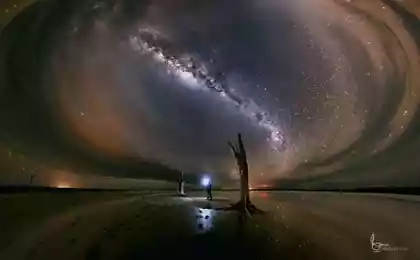256
Could quasars be the main source of light in our universe?

Quasars are the brightest objects in the universe. Their intense light is generated by the gas when it hits the black hole. These mysterious radio-wave-emitting objects were first discovered by radio astronomers in 1963, who called them “quasi-stellar radio sources,” or quasars. There may be millions or billions of stars in galaxies, but they all pale in comparison to quasars. Understanding how numerous small galaxies can outshine bright and rare quasars will enable us to study populations of stars and planets more closely. It will also allow scientists to calibrate their measurements of dark energy, which is responsible for increasing the acceleration of the expansion of the Universe and determine its distant future.
A study published in the journal Astrophysical Journal Letters by Caltech cosmologists Andrew Pontzen and Hiranya Peiris raised questions: What lit the cosmos? Is ultraviolet light coming from numerous but faint galaxies or from a small number of quasars?
The new method of study proposed by the team builds on a technique that astronomers already use, with quasars acting as beacons to understand the cosmos. The intense light of quasars makes them easily detectable even at giant distances of 95% of the entire length of the visible universe. The team believes that studying how this light interacts with hydrogen on its way to Earth will reveal the main sources of illumination in the universe, even if these sources are not quasars.
There are two types of hydrogen in the universe: neutral form and charged as a result of bombardment by ultraviolet light. The two forms can be distinguished by studying a special wavelength of light called Lyman-alpha, which is absorbed only by the neutral form of hydrogen. Scientists can see where in the universe this Lyman-alpha light was absorbed by neutral hydrogen.
Because the quasars studied are billions of light-years away, they act like time capsules: looking at them, we can see what the universe was like in the distant past. The map will show where neutral hydrogen was billions of years ago, when the universe was building its galaxies.
The uniform distribution of neutral hydrogen will show that the source of most of the light was numerous galaxies, and a less uniform pattern showing a patchwork of charged and neutral hydrogen would mean that it was rare quasars that were the main source of light.
Current examples of quasars are insufficient to qualitatively analyze the differences between the two scenarios. However, a number of studies are currently planned that should help scientists find the answer.
Chief among them is DESI (Dark Energy Spectroscopic Instrument), a study that will require detailed measurements of about a million distant quasars. While these measurements are largely intended to show how the expansion of the universe is accelerated by dark energy, the DESI results will also determine whether the gas was evenly illuminated. If not, it will be clear that the light of our universe is produced by “multiple cities” (quasars) rather than “multiple towns” (galaxies).























